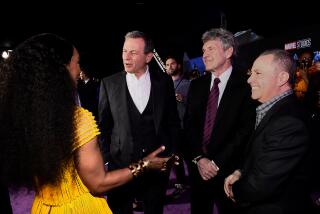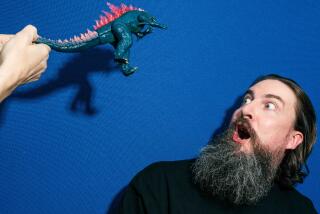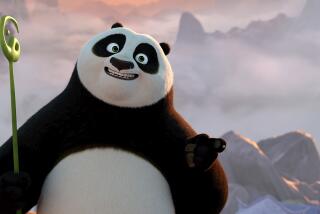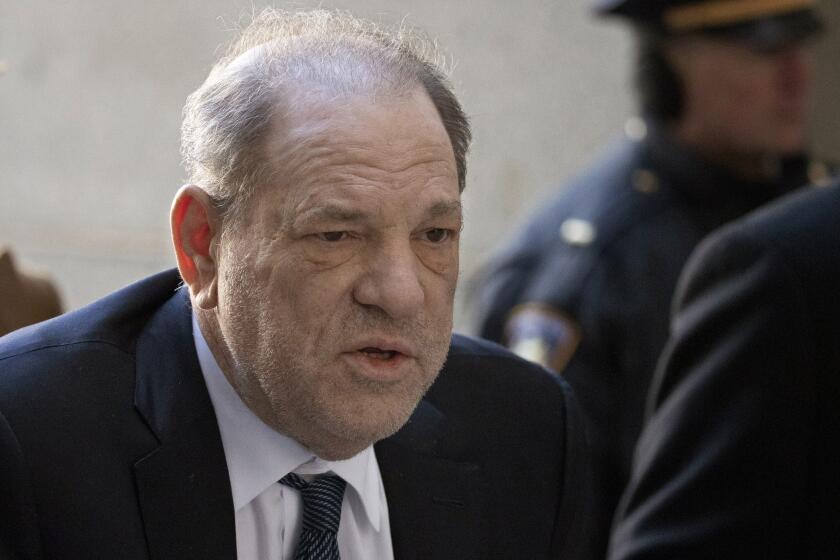When the glass ceiling crashed on Brenda Chapman
Crews of hundreds can typically spend years making a single animated feature — and it’s not uncommon during what “Kung Fu Panda 2” director Jennifer Yuh Nelson describes as a “messy, creative process” for a director to be fired midway through a production.
It happened to Jan Pinkava, who was directing 2007’s “Ratatouille” before Brad Bird took over the Oscar-winning Pixar film. And it happened to Chris Sanders (“How to Train Your Dragon”), who was removed from Disney’s “American Dog” in 2006, before it was reimagined as “Bolt.”
Still, when Brenda Chapman was fired from Pixar’s “Brave,” it stung not just Chapman but also her female colleagues in the animation community.
“I think it’s a really sad state. We’re in the 21st century and there are so few stories geared towards girls, told from a female point of view,” said Chapman, who spent six years on “Brave” — which was inspired by her relationship with her daughter — before being fired because of what she calls “creative differences.”
Chapman’s removal came roughly one year after Disney’s 2009 animated feature “The Princess and the Frog” disappointed at the box office and one month before the premiere of the company’s film “Tangled.” That film, which was originally titled “Rapunzel,” underwent a number of revisions to broaden its appeal beyond a core audience of little girls.
Chapman is currently on a leave of absence from Pixar.
The company declined to comment for this story, but did confirm that Chapman will be one of two directors who will receive a credit on “Brave.”
Considered a pioneering figure in animation, Chapman was the first woman to serve as head of story on a Disney film (“The Lion King”) and she spent eight years at DreamWorks Animation, where she was one of three directors on 1998’s “The Prince of Egypt,” before moving to Pixar. She’s mentored younger women in the business; Nelson, for one, credits Chapman with encouraging her to pursue directing.
Although women have produced any number of animated features — Darla K. Anderson produced the most recent animated feature Oscar winner “Toy Story 3” — they seldom direct, a reality that “Kung Fu Panda 2” producer Melissa Cobb attributed to a dearth of role models.
“There are no 80-year-old animators out there today for women to look up to,” Cobb said. “It’s taken a moment for women to realize there is a lot of opportunity here.”
DreamWorks Chief Executive Jeffrey Katzenberg echoed those sentiments, and made a point of noting that he’s “always loved working with strong women.”
“Historically the animation industry was completely dominated by men: Disney, the nine old men, it was a male world,” Katzenberg said. “And until recently the whole field of engineering — software, technology — was also dominated by men. It’s changing, and it’s changing rapidly, especially at our place where almost every producer of our films is a woman and all the female directors directed at DreamWorks.”
The future appears promising, however. According to Kathy Smith, chairwoman of USC’s John C. Hench Division of Animation and Digital Arts, at least half of her students in both the school’s newly formed bachelors of arts program and masters program are women, and she’s encouraged by the positions they’ve been able to acquire upon graduation.
“There are a ton of women in the industry and a lot of women high up in producing positions,” Smith said. “It’s a matter of time. It’s going to get better.”
Chapman and Nelson find that news encouraging.
“If you do good work and you provide a very good service, then it’s just bad business to assume that if she’s a girl, she can’t do it,” Nelson said.
More to Read
The biggest entertainment stories
Get our big stories about Hollywood, film, television, music, arts, culture and more right in your inbox as soon as they publish.
You may occasionally receive promotional content from the Los Angeles Times.






